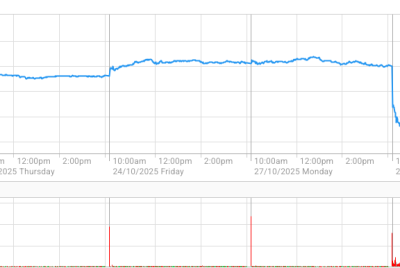Are anxious children being prescribed medication with minimal therapy?
An American-based study has evaluated the recent trends in anxiety disorder diagnosis and treatment among children, adolescents and young adults.

Anxiety disorders are the most common and prevalent mental health condition among children, adolescents and young adults today. The characteristics of anxiety disorders include persistent, overwhelming worries and fears that can occur in various settings or situations, as well as the experiencing emotional or physical symptoms that can interfere with daily function.
If left untreated, anxiety disorders can subsequently lead to dysfunction, unemployment, poor job performance, depression and a heightened risk of substance abuse later in life. Although there are many effective therapeutic and pharmacologic treatments available, countless patients do not receive the care they need, and those that do will only receive medication, not counselling.
A recent study published by the American Academy of Paediatrics delved into this topic further by evaluating recent trends in anxiety disorder diagnosis and various treatments among children, adolescents and young adults. To conduct the study, researchers used cross-sectioned data from the National Ambulatory Medical Care Survey (NAMCS), a national annual survey of US-based office visits for patients, ranging from paediatrician's office appointments and family medicine providers.
The patients were split into three age groups (4-11 years, 12-17 years and 18-24 years), whilst the treatment categories were created on the basis of the NAMCS survey collection tool:
- Psychotherapy or counselling
- Therapy and medication
- Medication alone
- Neither therapy nor medication
The medications that were analysed included those most commonly used to treat the fluctuating symptoms of anxiety disorders such as antidepressants, benzodiazepines and antihistamines, which were also dependant on the specific diagnosis and the psychotherapeutic treatment that was recommended. A combination of cognitive behavioural therapy and selective serotonin reuptake inhibitors (SSRIs) are usually considered for the treatment of severe social or separation anxiety in patients more than 6 years old.
Running consistent with previous studies that used NAMCS data, multiple yearly time-frames of office visits were pooled together, creating three time periods: 2006 to 2009, 2010 to 2013 and 2014 to 2018. Using logistic regression to model probability, the researchers were then able to compare and distinguish any differences in the four categories for mental health treatment, whilst adjusting for the age group, sex and ethnicity of the patients.
The results showed that there were over 1,700 visits for anxiety disorder over the study period in the sample, which represented a total of 46.4 million office visits with an anxiety disorder diagnosis. Statistically, the overall proportion of office visits between 2006 and 2009 tripled from 1.4 per cent to 4.2 per cent between 2014 and 2018. In contrast, the increase in child visits with anxiety disorder diagnoses was smaller, going from 0.6 per cent to 1.5 per cent.
In regards to the treatment of therapy alone or therapy and medication, the overall proportions of visits decreased from 48.8 per cent to 32.6 per cent in the first and last time periods. And the overall proportions of medication treatment alone did not differ by period, although medication was prescribed to over 60 per cent of all visits in the recent period. Among these prescribed medications, SSRIs and benzodiazepines, which are used to help with anxiety and insomnia, were the most common.
When examining the differences by the period of all four treatment categories, it was established that the proportions of visits receiving neither therapy nor medication increased over time for all the age groups, as did those receiving just medication treatment. Also, the likelihood of having neither therapy nor medication was significantly greater for the last period compared to the first period.
Researchers concluded the study by stating that this reduction in therapy during office visits and a greater reliance on medication for anxiety disorders could reflect growing constraints in resources in office settings in the context of a growing mental health crisis amongst young people.
In other words, as the number of young people with anxiety disorders has unremittingly increased since 2006, the number of children that receive psychotherapy has, in turn, decreased.
Janine Domingues, a psychologist in the Anxiety Disorders Centre at the Child Mind Institute, commented: "The reason we don't recommend just medication alone, particularly with children and adolescents, is because we know that the skills gained through therapy are an important addition. Not only do we want to see kids not suffering with anxiety symptoms, we also want to see them functioning, going to school, having friends."
Laura Chavez, senior research scientist and author of the study, commented with concern, saying: "This really shows that the burden of treating mental health conditions among patients is growing. Even when they're able to navigate the health care system and visit with a physician in an office setting, they may not receive the treatment that they need."
She added: "We need to really think carefully about how we can provide tools to office-based physicians so that they can better care for their patients."
"We don't want to see as many missed opportunities for these patients to get the care they need," Chavez concluded.
© Copyright 2025 IBTimes UK. All rights reserved.





















